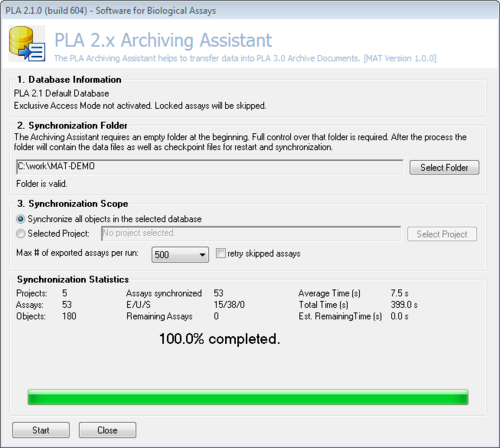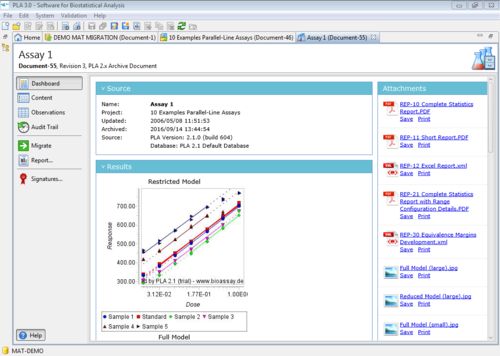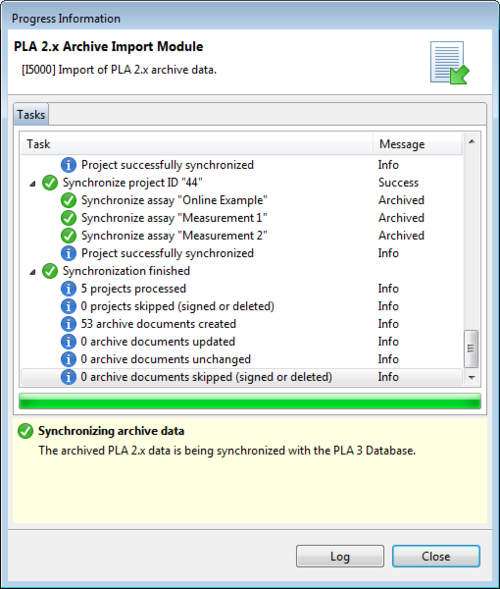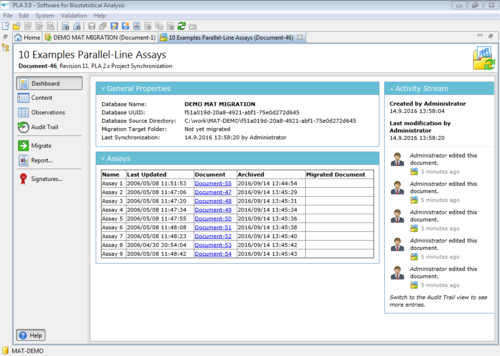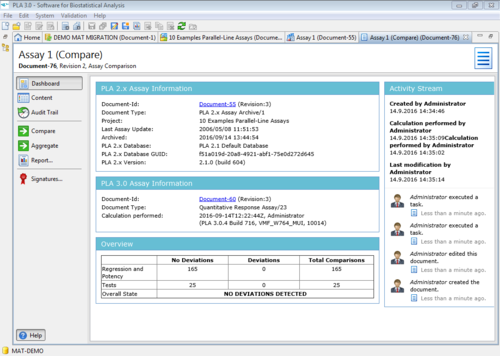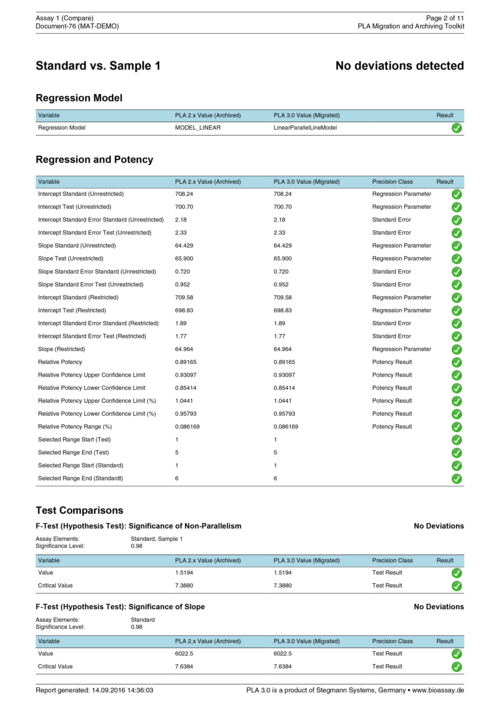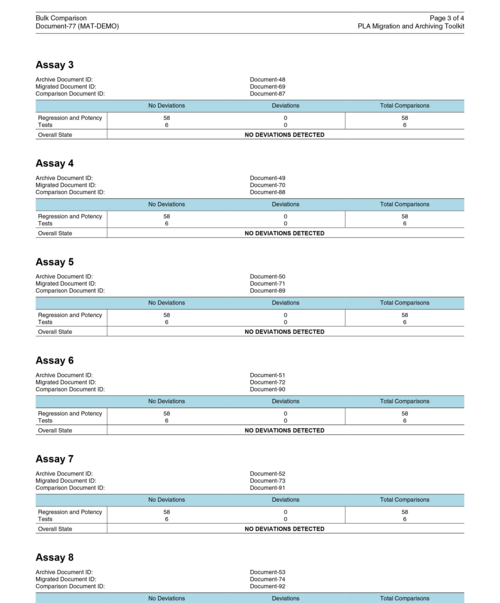-
PLA 3.0
- PLA 3.0 Virtual booth
- ---
- Explore PLA 3.0
- Compliance features
- Deployment
- ---
-
Experiments
- Parallel-line potency assays
- Parallel logistic potency assays (3PL, 4PL, 5PL)
- Slope ratio potency assays
- Quantal response potency assays
- Interpolation analysis
- Effective-concentration calculation (ECn)
- Spike-and-recovery analysis
- Cylinder-plate assays
- Turbidimetric assays
- ---
- Analyze the endotoxin concentration in a substance
- Import your data
-
Analyze your data with PLA 3.0
- Analyze Biological Potency Assays
- Analyze quantal response assays
- Analyze the dose-response relationship
- Analyze the endotoxin concentration in a substance
- Develop Equivalence margins
- Determine the potency of antibiotics
- Perform a curve comparisons
- Perform a Linearity-of-dilution assessment
- Perform a sophisticated statistical process control
- Perform combination calculations
- Advanced analysis
- Monitoring
- Supporting add-ons
- ---
- Event Calendar
- News
- Newsletter
- Get started
- Learning and support
- Downloads
- Company
PLA 3.0 Migration and Archiving Toolkit
We are aware that switching from PLA 2.x to PLA 3.0 might look like a big deal. Especially when you work in a regulated environment, with validated assays and an archive that goes into the thousands. With the new PLA Migration & Archiving Toolkit the transition to PLA 3.0 is now easier than ever before.
Your benefits at a glance
- Keep all your bioassays in one place
- Retire older versions of PLA without losing valuable assay data
- Shorten the re-qualification of previously qualified methods
- Use your assay archive to improve your analysis
- Migrate your bioassays exactly as they are
We called it “toolkit” because the program is really a package of several distinct tools, each designed to complete a specific task. This might seem rather complex, but it was necessary because PLA 2.x and PLA 3.0 are two completely different programs. They were written in different programming languages. They can coexist on the same computer and you can import PLA 2.x assays into PLA 3.0, turning them into PLA 3.0 assays. But the PLA Migration & Archiving Toolkit goes several steps further.
Archiving PLA 2.x Assays
Before you retire your PLA 2.x installation and switch to PLA 3.0, you want to make sure that all your assays remain accessible no matter what. That is what the PLA Archiving Assistant will do for you.
To set up the PLA Migration & Archiving Toolkit, you will need to add a small number of files to your PLA 2.x installation manually. Existing files will not be altered. It is important to know that the PLA 3.0 MAT will do nothing that might compromise your validated PLA installation. Therefore, your PLA 2.x installation remains validated.
The PLA 3.0 Migration & Archiving Toolkit transfers your PLA 2.x data in three forms: assay data, calculated assay and report. The software also calculates every assay as it archives it. Your assay data will not change in the process. Even errors in your original data will remain unchanged.
So in case you face an inspection, either by your inhouse quality control or by external agencies, you won’t have to look further than your PLA 3.0 installation to find everything you need.
Synchronizing PLA 2.x assays with PLA 3.0
Archiving your PLA 2.x data can be a one-time event. But that might not be the most comfortable way for every user. Especially if those assays you would like to move to PLA 3.0 are still productive. To make the transition from PLA 2.x to PLA 3.0 as smooth as possible, the Migration & Archiving Toolkit lets you to import your productive assays incrementally. We call this feature synchronizing.
On the first run, the software will copy the assays on a per project base. It allows you to synchronize all or only selected PLA 2.x projects with PLA 3.0. Initially, it copies all assays of the projects in question. On every subsequent run, it is going to transfer only new or changed PLA 2.x assays.
Synchronizing makes sense when you want to continue working with PLA 2.x while you are preparing to switch to PLA 3.0. Please note that synchronizing only works one way. It is not possible to move PLA 3.0 data to PLA 2.x.
Migrating PLA 2.x assays to PLA 3.0
When you consider the features of PLA 2.x on the one hand, and those of PLA 3.0 on the other hand, you might want to switch sooner rather than later. And that is where the migration feature comes in.
It lets you migrate productive assays from PLA 2.x to PLA 3.0. You can then continue these assays in PLA 3.0, benefitting from all the advantages this software has to offer. For example, when you are using the control chart function or the equivalence margin development of PLA 3.0, having a larger assay archive available will almost certainly improve your results.
Migrating your assays will also put you in a position to retire your PLA 2.x installation without losing any important data.
Comparing your assay results
The feature to compare migrated assays with the original data in PLA 2.x is necessary because there are small differences in the calculations between PLA 2.x and PLA 3.0. These small differences may or may not lead to small deviations in your assays. But with the PLA Migration & Archiving Toolkit, you’ll be on top of this.
It works like this: The new comparison package compares the original calculation results of the PLA 2.x assays with those produced by PLA 3.0 using the migrated assays as input. It then generates a report pointing out the differences (if any) between the calculation results of PLA 2.x and PLA 3.0. This can be done for a single assay or in bulk.
The report gives evidence that the PLA 3.0 method produces the same results as PLA 2.x and serves as input for fine-tuning your PLA 3.0 method. In fact, for many users, this feature alone is worth the entire price of the product.
This way, the program also makes the re-qualification process of previously qualified methods in PLA 3.0 faster and easier, saving you plenty of time and effort.
